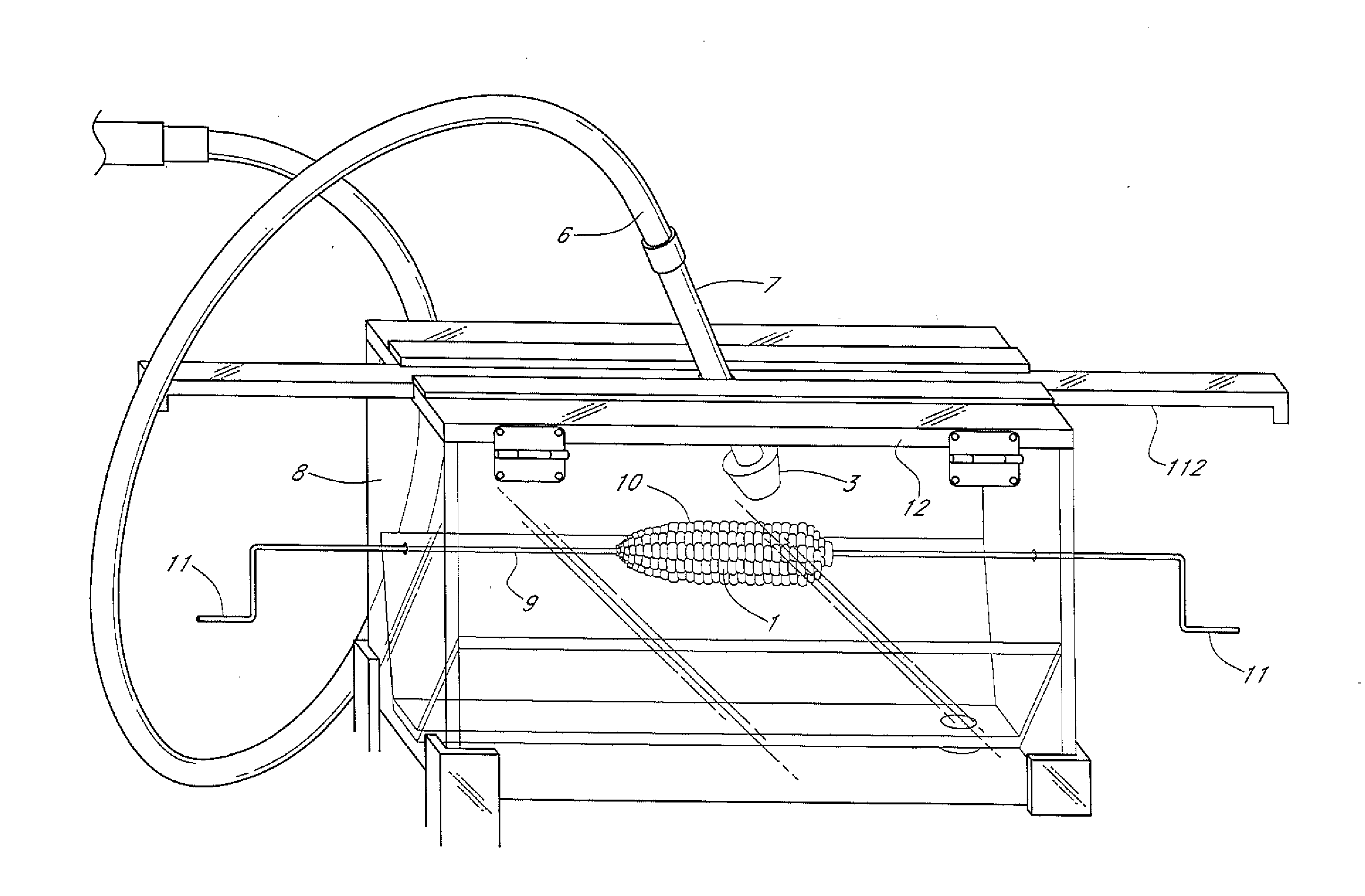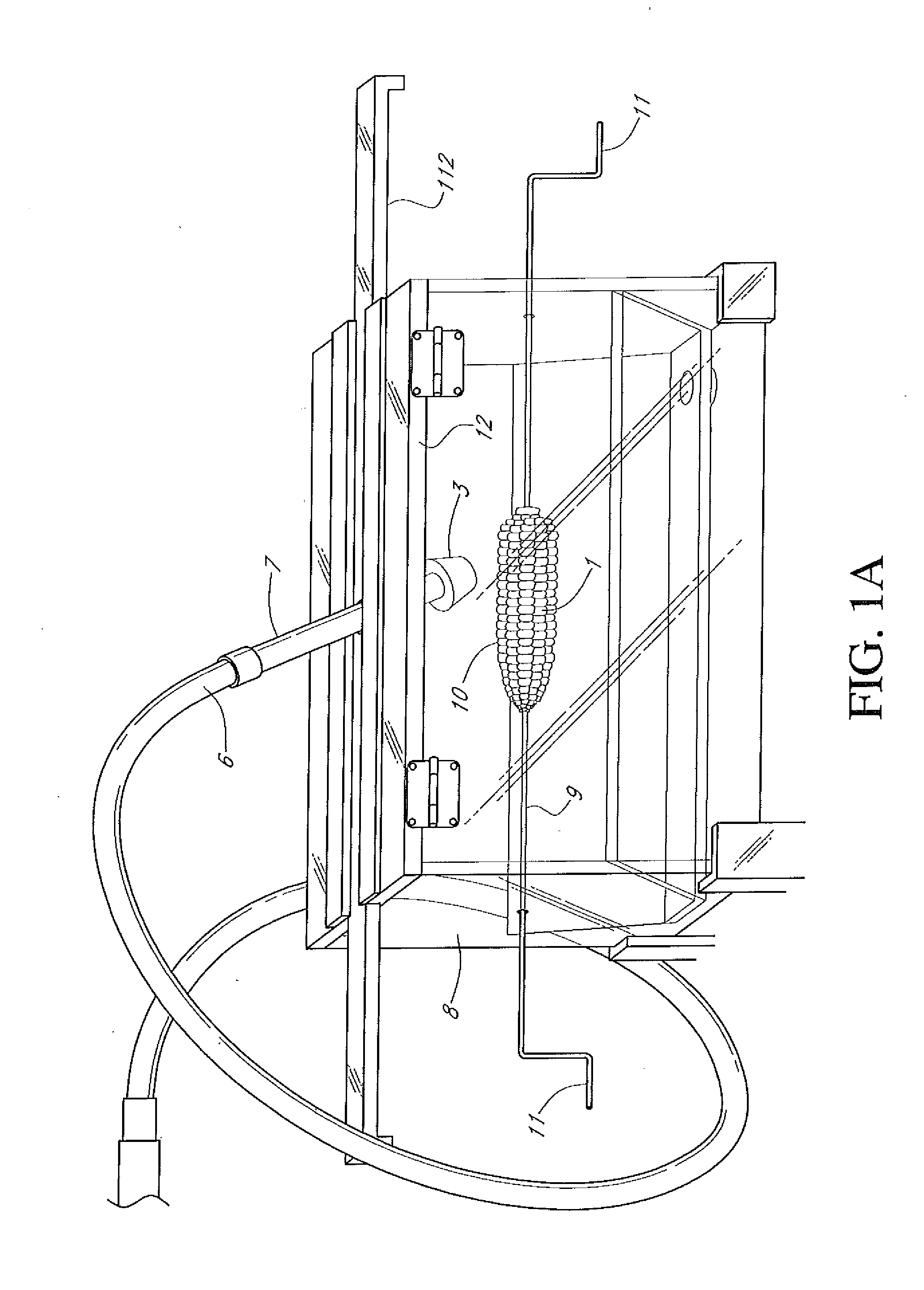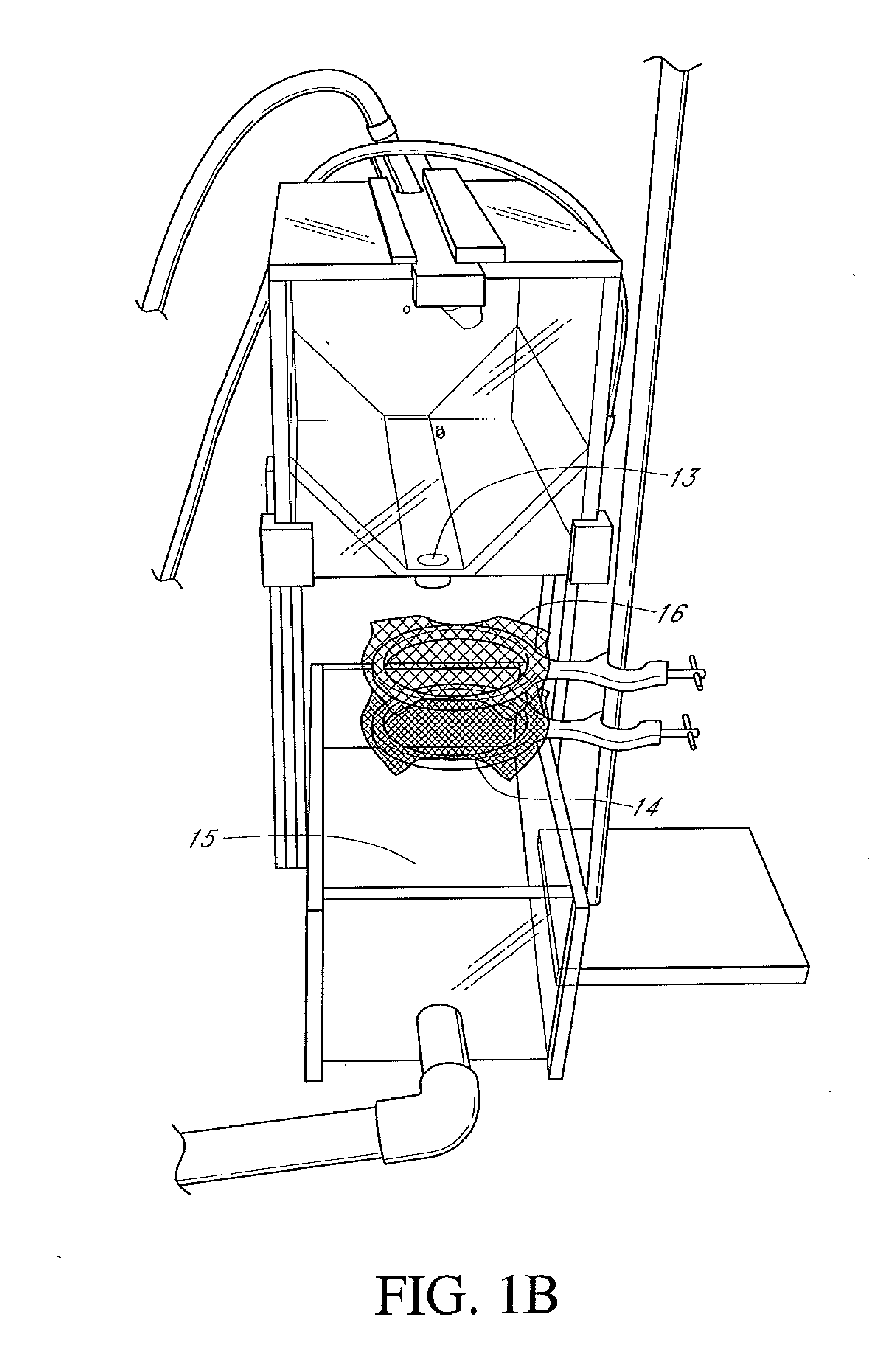Method and Appartus for Extraction of Plant Embryos
- Summary
- Abstract
- Description
- Claims
- Application Information
AI Technical Summary
Benefits of technology
Problems solved by technology
Method used
Image
Examples
example 1
Excision and Precocious Germination of Immature Embryos from 12 D.A.P. Embryos
[0111]This example illustrates the use of a fluid wash system to excise / displace immature maize embryos from an ear of corn.
[0112]Sterilization of the Fluid Pressure Wash System:
[0113]Five gallons of 10% Clorox (6.0% Sodium Hypochlorite) solution was continuously re-circulated through the pump, manifold, hoses, and UV sterilizer system shown in FIGS. 1A-C for approx. 30 minutes. The Clorox solution was then evacuated from the system by running it out through the sprayer hose and box apparatus (FIG. 1A) and down into the drain.
[0114]Five gallons of sterile water was circulated directly through the system and out into the drain.
[0115]Five gallons of sterile Millipore water or tap water was continuously re-circulated through entire fluid system of the apparatus for 30 minutes then stored in a tank until used for the fluid pressure extraction of the embryos. Finally, the enclosure / spray box apparatus (FIG. 1) ...
example 2
Excision and Embryogenic Callus Induction from 9 DAP (Days After Pollination) Embryos
[0123]The genetic engineering of some corn lines was based upon the utilization of young (approximately 9 D.A.P.) embryos. These diploid embryos were quite small, ranging from approximately 0.5 to 1 mm in length, and, thus, were more fragile than the larger more robust 12 D.A.P. embryos (approx. 1-2 mm in length) described in Example 1. Thus, the power-wash displacement system was evaluated using a transformation competent corn line and immature embryos of a size suitable for plant transformation.
[0124]Both the disinfection of the power-wash system and corn ears as well as the power-wash displacement of immature embryos was conducted as described in Example 1. However due to the more fragile nature of these less mature embryos, the following power-wash pounds per square inch levels were evaluated with respect to embryo extraction: 20, 30, 35, 40, 60, 70, 90. The extracted immature embryos were evalu...
example 3
Excision of Putative Haploid Embryos (18-20 D.A.P.)
[0126]Maize haploid inducer lines such as K.H.I., RWS, RWK-76, and ZMS may be utilized as a pollen parent to induce the development of maternal haploid kernels. The aforementioned haploid inducer lines carry the R-nj anthocyanin pigment locus that confers coloration in both the embryo and aleurone within the maize kernel. The R-nj marker haploid kernels can be identified by a unique anthocyanin pigmentation pattern wherein the haploid embryo was substantially colorless and wherein the aleurone in the cap region of the kernel was pigmented. In fact, the embryo may have a slightly colored caleoptile and still be a haploid. The scutellum of the embryo is the material that should remain colorless. In contrast, the diploid embryos have anthocyanin pigmentation both in the embryos and in the aleurone. The initiation of kernel pigmentation both in the greenhouse as well as the field was variable, in part due to environmental conditions, bu...
PUM
| Property | Measurement | Unit |
|---|---|---|
| Fraction | aaaaa | aaaaa |
| Fraction | aaaaa | aaaaa |
| Fraction | aaaaa | aaaaa |
Abstract
Description
Claims
Application Information
 Login to View More
Login to View More - R&D
- Intellectual Property
- Life Sciences
- Materials
- Tech Scout
- Unparalleled Data Quality
- Higher Quality Content
- 60% Fewer Hallucinations
Browse by: Latest US Patents, China's latest patents, Technical Efficacy Thesaurus, Application Domain, Technology Topic, Popular Technical Reports.
© 2025 PatSnap. All rights reserved.Legal|Privacy policy|Modern Slavery Act Transparency Statement|Sitemap|About US| Contact US: help@patsnap.com



